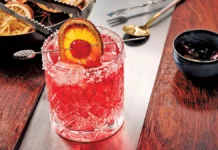No wine seems more misunderstood or mistreated than Rosé. In the red and white world of wine it seems there is no room for pink.

When did this campaign against pink begin? Most likely it is a backlash from the California White Zinfandel craze of the 1980’s. Light, sweet and easy to consume, it was a wine anyone could tip back. Many a fortune was made on White Zin in those days and it still remains a favorite for quite a few wine drinkers. The problem is that somehow pink has been condemned. So now many pink drinkers don’t feel free to come out of the proverbial wine closet. To confuse things even further these White Zinfandels bare no resemblance to the French Rosé that inspired them. Fresh, crisp and dry this is the profile of most European Rosé. Rosé in its true form is the perfect wine for a warm day whether you are nibbling on anything from salad to baked ham.
So what accounts for our pink aversion? Maybe it is just simply the color. Consider this; a French study in 2001 by Gil Morot concluded that our perceptions of wine and its flavors or aromas are prejudiced by its color. It turns out our brains are prone to unconscious synaesthesia where our senses become confused. In this study, participants tasted a white wine and described melons, honey and citrus. The same wine were then colored red and participants perceived things like berries, leather and tar, which are common aromas in red wine. Given this unconscious phenomenon, along with our eighties memories of the White Zinfandel that color our thoughts even before we lift the glass to our lips.
Given that spring is the absolute perfect time for a glass of Rosé it makes sense to turn a blind eye to its appearance. Try this exercise; close your eyes and imagine the flavors of watermelon, luscious strawberries, or a ripe peach. Now think of the refreshing factor you get from a crisp white wine like a Spanish Albariño or Sauvignon Blanc. Put those together – luscious fruit with a refreshing crisp finish. That is traditional Rosé.
Now that we are comfortable thinking pink it makes sense to review the ways Rosé gets its color. One way is to blend white and red wines making it, of course, pink! Another is to leave the grape juice in contact with the red grape skins for a short period of time, whereby only receiving minimal color. Most people are surprised to learn that in fact all grape juice is virtually clear. It is only this skin contact that makes a wine from red grapes truly red. The third method called Saignée, which in French literally means to bleed. During red wine fermentation the skins of the red grapes are working to create the red shades we admire in our Pinots or Cabernets. Before the coloring is complete some of the wine is bled off early resulting in a lighter shade of red that I might dare to call pink.
If you are ready to start trying some great Rosé you’ll be happy to know that it is made all over the world. The south of France is probably the region we most associate with Rosé. Provence has formed an identity from this pink drink and areas in the Loire Valley, Rhone Valley and Bordeaux also produce their versions of French Rosé from the red grapes they are best known for. Some of the most exciting Rosés of late come from Spain and believe it or not Greece. Not to be outdone some US winemakers going beyond White Zinfandel to include dry pink wines in their portfolio.
Don’t forget that its food friendliness is one of a Rose’s best qualities. Its fuller body allows it to handle food pairings that might overwhelm a white. Crisp acidity ensures that it can withstand dishes with a good amount of salt and dishes that use acidic ingredients like vinegars or goat cheese. Some of the natural partners for dry Rosé include appetizers, salads, seafood, white meats, ham and even dishes with a bit of spiciness. Sauces that include garlic, tomatoes or olives are also no problem for a crisp Rosé.
As things warm up and your guests want the refreshing coolness of white wine with the fabulous flavors of red wine, suggest they give Rosé a chance. You’ll soon forget everything you knew about Rosé in the 80’s. It is time to stop judging Rosé strictly by its color. Remember the lesson you were taught as a kid – don’t judge a book by its cover or a wine by its color. It’s what is inside the bottle that counts.
























